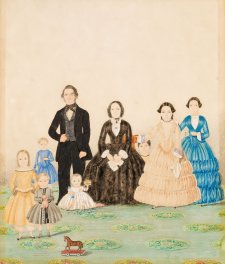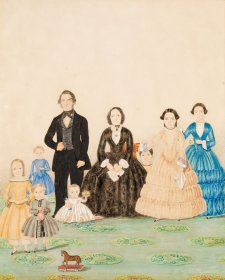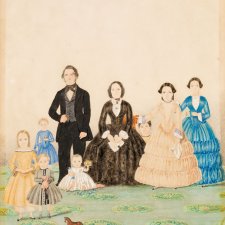Charles Henry Theodore Costantini (also Constantine, Constantini and Costantine) was a Paris-born surgeon of Italian descent who was twice transported to the Australian colonies in the 1820s. In the first instance, as Theodore Constantine, he was convicted at the Old Bailey of stealing jewellery and had his death sentence commuted to transportation to New South Wales for life. He arrived in Sydney in September 1823 and was assigned to a Thomas Hawkins in Bathurst. In August 1825 he was granted a free pardon by governor Thomas Brisbane. One historian has said that this was Costantini’s reward for having saved the life of his employer’s child (the infant had been bitten by a snake); other sources state that the pardon came at the request of visiting French navigator Hyacinthe de Bougainville. In his journal of his sojourn in Sydney, Bougainville wrote of meeting Costantini at the government farm at Emu Plains; according to him, Costantini was ‘a fine young man with a pleasant face, [who] was deported for rape, having made extremely amorous advances to the wife of a greengrocer’. Bougainville also wrote of assisting Costantini with an appeal to the governor, and claimed that the convict’s pardon had come about ‘following my intervention’. Costantini subsequently sailed home with Bougainville as ship’s surgeon.
Shortly after his return to England, however, he was found guilty of thieving two £5 notes and was banished to Van Diemen’s Land for seven years. His entry in the Convict Department’s conduct register describes him as ‘disposed to be very troublesome’, ‘a Teacher of the Italian’, and an unmarried Roman Catholic. The register also shows that Costantini continued to transgress after arriving in Hobart in early October 1827: a week after disembarking, for example, he was given 14 days on a chain gang for ‘being in a state of intoxication at muster’. Soon thereafter dispatched to the penal station at Macquarie Harbour, he was put to work in the hospital as a dispenser of medicines but attracted the attention of the settlement’s commandant, James Butler, who in January 1828 wrote to the colonial secretary of his intention to employ Costantini in making sketches ‘in order to afford His Excellency an idea of this Station and its Localities’. To this end, a box containing Costantini’s brushes and colours was sent from Hobart. At Port Arthur from 1831, he again worked as an assistant surgeon and hospital superintendent while also picking up floggings and stints of solitary confinement for ‘highly insubordinate and disrespectful conduct’ along with other offences. He managed to receive his certificate of freedom regardless in March 1834 and by 1838 was in Launceston, advertising his availability in the Cornwall Chronicle for the execution of ‘portraits in the most correct style, also, views, and sketches of gentleman’s farms, &c’. Between this time and the mid-1850s, Costantini produced some 60 portraits and domestic landscapes, mainly in watercolour, for clients in various parts of the colony. He is also known for a small number of enigmatic trompe l’oeil works which, one historian has suggested, may be evidence of his participation in the forgery of banknotes in the mid-1830s. At some point around 1857 Costantini left Tasmania; by mid-1858 he was in Hawaii, where he died in October 1860.







